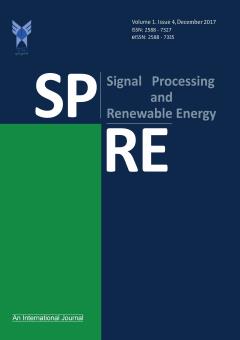A Novel Barrier function adaptive Terminal Sliding Mode Controller for Trajectory Tracking of a Nonholonomic Wheeled Mobile Robot
الموضوعات : Control
Fahime Kordi
1
,
Hamidreza Reza Alikhani
2
,
Javad Nikoukar
3
![]()
1 - Department of Electrical Engineering, Saveh Branch, Islamic Azad University, Saveh, Iran.
2 - Department of Electrical Engineering, Tafresh University, Tafresh, Iran
3 - Department of Electrical Engineering, Saveh Branch, Islamic Azad University, Saveh, Iran
الکلمات المفتاحية: Nonholonomic wheeled mobile robot, adaptive barrier function, terminal sliding mode control, trajectory tracking, chattering-free.,
ملخص المقالة :
This paper introduces and discusses a new control strategy for nonholonomic wheeled mobile robots (WMR). Robot models include kinematic and dynamic equations of motion. A barrier function adaptive terminal sliding mode control is used to control the movement of the robot. It considers sliding mode control (SMC) to deal with the dynamic model uncertainties of the chaos system, and uses a combination of SMC with an adaptive control approach to solve the upper boundaries problem of unknown model uncertainties and their estimation. Chattering is completely eliminated without over estimating the control gains by adopting an adaptive continuous barrier function in the dynamic switching function. Using the Lyapunov's stability theory, it was shown that the proposed scheme can guarantee the convergence of system states to the vicinity of the sliding surface in finite time. Additionally, the adoption of a sliding surface with a nonlinear and integral switching function resulted in removing the reaching phase of the sliding surface and yielding a controller that is robust to uncertainties from the start. The effectiveness of the proposed control method was assessed using three scenarios implemented to a Liu's uncertain chaotic system in MATLAB/Simulink environment. The obtained results confirmed the ability of the proposed approach to achieve continuous and smooth control rules for such chaotic systems. Among the main attributes of the proposed control method are its ability to completely eliminate chattering and yield a robust performance against model uncertainties and unknown external disturbances.


